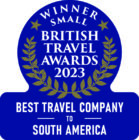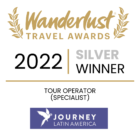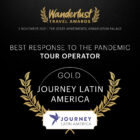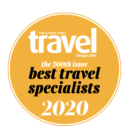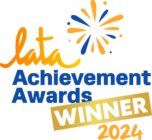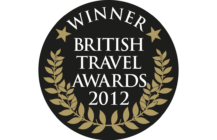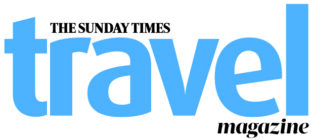Private Journeys
Luxury Chile: Exclusive lodges and untamed landscapes
13 days from £12,200pp
(based on two people sharing & excluding flights)
Essentials
-
Tour info
-
Country info
-
What's included
Tour info
Transport
5 internal flights (2-4hrs); 4 road journeys (longest 4 hrs)
Accommodation
We’ve selected some of the finest hotels for this holiday. You’ll stay at a stylish hotel with good facilities in Santiago’s elegant Las Condes district, and two lodges belonging to the prestigious Awasi portfolio in Patagonia and San Pedro de Atacama, In the lake district you will stay at a beautiful lodge with personalised service from the proprietors. Each property captures the flavour of your surroundings perfectly. Whatever the style – traditional classic or lodge – they have top of the range service, facilities and bespoke guided excursions.
Meals
Full board with drinks included at Awasi Patagonia (4 nights), Awasi Atacama (3 nights) and Hacienda Vira Vira (3 nights). Breakfast daily in Santiago (2 nights).
Guides
We carefully select our local partners, some of whom we have worked with for over 30 years. Their English-speaking guides understand the expectations of our clients very well, and are consistently singled out for praise by the latter on their return. The guides at your luxury properties are well qualified and English-speaking.
Summary Of Nights
13 days, 12 nights: Santiago 1, Torres del Paine 4; Santiago 1; San Pedro de Atacama 3; Lake district 3.
Currency
The unit of currency in Chile is the peso.
How To Take It
Cash machines are available in all major cities and towns, and so taking a debit or credit card with a PIN number is the most convenient way of withdrawing money while on your trip, and in most shops and restaurants you can also pay by card. However, since cards can get lost, damaged, withheld or blocked, you should not rely exclusively on a card to access funds.
We recommend that additionally you take a reasonable quantity of US dollars cash (no more than is covered by your insurance), which you can exchange into local currency. Dollar bills should be in good condition, soiled or torn bills may be refused. You can take sterling, but the exchange rate is not always competitive or even available, restricting the number of places where you can change money.
Daily Spend
Most meals, drinks and activities are already included in the cost of this holiday (the main exceptions being Santiago and the odd meal en route between destinations). Further expenses may include discretionary tips to your local drivers and guides, laundry, optional spa treatments. We suggest a budget of around US$500pp to cover reasonable additional expenditure.
Tipping
Tips are welcomed and local guides often rely on their tip as a significant proportion of their income.
Most service industry workers will expect a tip of some kind and so it is useful to have spare change for hotel porters, taxi drivers and the like. It is common to leave 10 – 12% in restaurants.
Insurance
Travel insurance is essential.
Details of our recommended policy can be found on our Travel Insurance page.
Airport Taxes
If you have purchased your flights through Journey Latin America, the international departure tax is usually included in the ticket.
Trip Suitability
This is a fully comprehensive holiday with travel or optional excursions on most days but may be considered very relaxing. You will be staying at an altitude of over 2,000m in the Atacama desert and some excursions may take you to over 4,000m. Local guides can advise you about precautions against any ill effects generated by the thin air at altitude; most people only feel a little breathless.
This holiday is suitable for all able-bodied, reasonably fit visitors. In other cases, e.g. if you have a disability or other special requirements, please call us.
Climate
In the Santiago area expect a Mediterranean type climate. In February temperatures range between 28°C and 35°C and there’s a good deal of sunshine.
The Atacama desert is hot (18-30°C) though temperatures fall substantially at night when it is clear and mornings are chilly. In Jan-Mar the region can be susceptible to heavy rains coming from the Bolivian Andes.
In the lake district, it can be hot (late 20s°C) during the southern summer but not unpleasantly so, and there is little rain.
The weather in southern Patagonia is notoriously unpredictable throughout the year. In the ‘season’, from October to March, there may be everything from a blizzard to a heat wave. Strong winds and rain are possible at any time and it can get extremely cold.
Altitude
Your stay in San Pedro de Atacama in the Andes is at high altitude (over 2,000m). A small minority of visitors may suffer temporarily from altitude sickness. Symptoms vary; most common are mild headaches, slight nausea and breathlessness. If you don’t recover in a day or two speak to our representatives; in very rare instances it is necessary to descend to lower altitudes. Most people are unaffected and if you drink plenty of water and allow your body to acclimatise (don’t exert yourself or drink alcohol) in the first couple of days after arrival, you will minimise your chances of suffering any symptoms.
Please refer to our Briefing Dossier for further information.
Clothing And Special Equipment
For day-to-day wear you should go prepared to encounter all seasons. Both warm clothing and a sun hat are essential, and a light fleece jacket and a Gore-Tex (or similar) outer shell makes a good combination. Trousers, skirt or shorts made from light, quick-drying synthetic materials work well. If you plan to eat in smart restaurants in Santiago although clothing is not formal (no need for jacket and tie), something quite smart would be appropriate. Strong, comfortable footwear is essential and you should bring umbrella, insect repellent, sun block and sun glasses.
Please get in touch with the office before departure if you have any doubts.
Trip Suitability
Preventative vaccinations are recommended against the following: typhoid; polio; tetanus; hepatitis A. You should consult your GP for specific requirements.
You can also find helpful information on the Masta Travel Health website.
Visas
Holders of a full British passport do not require a visa, although passports must be valid for at least 6 months after the trip begins. Anyone with a different nationality should enquire with us or check with the relevant consulate.
If flying to the US, or via the US you will need to fill in your online ESTA application.
Country info
When is the best time to visit Chile?
Chile is a year-round destination. The southern hemisphere's seasons are the reverse of Europe’s, with December-February as mid-summer. Spring (October-November) and autumn (March-April) can be pleasant and quieter, while winter (June-August) is coldest. The lake district, Santiago and Valparaiso have warm, sunny summers, while in Patagonia weather is more unpredictable. The Atacama Desert has extremes of heat and cold, while Easter Island has pleasant temperatures all year, warmest October-March, cooler June-September.
For more detailed information visit our When To Go section.
What is the official language of Chile?
The official language of Chile is Spanish.
How do I get local currency in Chile?
The local currency in Chile is the Chilean Peso. Notes can be withdrawn from the many ATMs in larger towns and cities using a UK credit or debit card. Limits may be lower than your UK bank allows. There are also many banks and money exchanges (casas de cambio) where you can exchange US dollars cash; rates for euros and sterling are harder to find and frequently poor. Non-resident foreign guests at hotels in Chile do not normally pay the 19% VAT on most extras (such as food and drink consumed on the premises) if the bill is settled in US$ (cash or credit card) upon checking out.
What's the time difference between Chile and UK?
The time difference between the UK and Chile is GMT -4 hours. Sometimes daylight saving is observed in the summer, from Sep/Oct to early Mar.
What countries combine well with Chile?
Bolivia, accessing the south of country from San Pedro de Atacama, travelling via salt lakes of the Salar de Uyuni; Argentina, crossing the Andes over one of several scenic passes: from the Atacama Desert in the north to Salta, from Santiago to Mendoza, via the lakes crossing from Puerto Varas to Bariloche in the lake district and from Torres del Paine to El Calafate in Patagonia.
Do I need a visa to visit Chile?
Holders of a full British passport do not require a visa, although passports must be valid for at least 6 months after the trip begins. Anyone with a different nationality should enquire with us or check with the relevant consulate.
If flying to the US, or via the US you will need to fill in your online ESTA application.
What vaccinations do I need for Chile?
Please check Travel Health Pro for information on health recommendations and vaccinations for the destinations you are visiting. Please note that many Latin American countries require proof of vaccination against Yellow Fever if you have recently travelled to another country where Yellow Fever is present.
What are the festivals, cultural and sport events in Chile?
Tapati festival, Easter Island is normally during the first 2 weeks of February with traditional music, dance and sports.
On New Years Eve Valparaiso has an impressive firework display.
What do I need to know about altitude in Chile?
Whilst a typical holiday in Patagonia presents no challenges with altitude, parts of northern Chile (Lauca National Park and parts of the Atacama Desert) offer a spectacular introduction to the high Andes, with several attractions at over 3,000m. Travel to high altitude can cause mountain sickness and even if you feel fighting fit it’s important to take things easy and stay hydrated (drink plenty of water, avoiding alcohol and caffeine) as you get used to the thin, dry air. You may initially notice a headache, dizziness or breathlessness and this usually improves with acclimatisation. If you are pregnant or taking the contraceptive pill, have a medical condition such as heart or lung condition, anaemia, asthma, high blood pressure you should seek the advice of your GP before booking. We also recommend you check your travel insurance covers travel to high altitude. If you’re taking the family, remember small children may be less capable of communicating altitude-related symptoms effectively: keep an eye on them too. Rest assured we will plan your itinerary carefully, taking into account any time spent at altitude. If you have any questions or concerns about altitude please speak to your travel expert.
Further advice on travel to altitude is available on www.travelhealthpro.org.uk.
Inspired by this trip
Our exciting range of articles on Latin America explore everything from iconic destinations and lesser-known cultural gems to delicious traditional recipes. You’ll also find exclusive travel tips, first-hand client reviews and the chance to get your personal questions answered by our travel experts.
Papagaio
Your edit for Latin American inspiration
Our exciting range of articles on Latin America explore everything from iconic destinations and lesser-known cultural gems to delicious traditional recipes. You’ll also find exclusive travel tips, first-hand client reviews and the chance to get your personal questions answered by our travel experts.
View Extraordinary Inspiration













